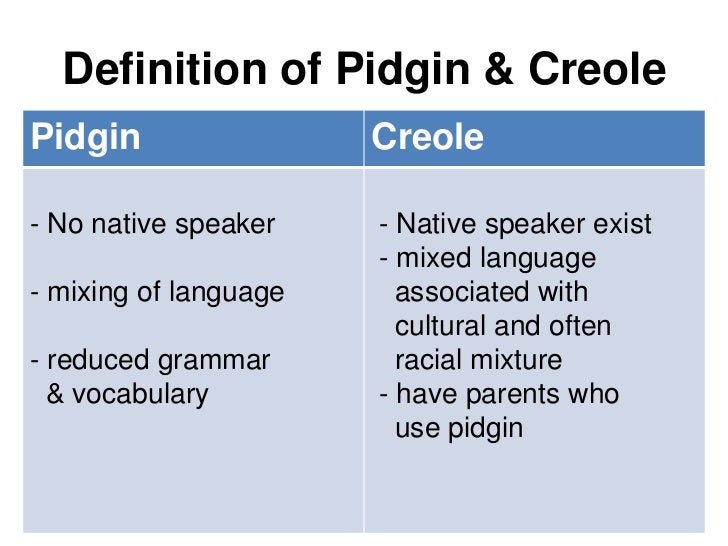



The English first arrived in China in the 17th Century, and international trade was born almost overnight.Ĭhinese Pidgin English first appeared at a few of the major trade cities and ports. The first language to officially be designated as a pidgin was Chinese Pidgin English (other, older languages were eventually, retroactively labeled as pidgins). Examples of pidgin languages around the world Chinese Pidgin English Where interlanguages did not exist (interlanguages are second languages held in common by speakers of different native tongues… a great example of this is Modern Standard Arabic), pidgins sprung up in their place. Historically, most pidgin languages were developed to make trade easier between European and non-European people.Īs speakers of vastly different languages began having constant contact with each other along popular trade routes and in busy ports, these groups were forced to devise a way to communicate with each other. What’s a pidgin?Ī pidgin (also written pijin) is a simplified language which has been derived from an existing language (or multiple languages) and used to bridge communication between groups of people with different languages. different, geographically-determined ways of speaking a first language, such as Spanish in Spain and Spanish in Mexico, Brazilian and European Portuguese or the many different varieties of Arabic), creoles (a combination of two first languages which has become a new, native tongue for a group of people), and pidgins (an alternative language developed to facilitate communication between speakers of two, different languages).īelow, I’ll clarify the difference between pidgins and creoles, and give some examples. There are many different types (and variations) of languages found around the world today.Īmong these, you’ll find dialects (e.g.


 0 kommentar(er)
0 kommentar(er)
